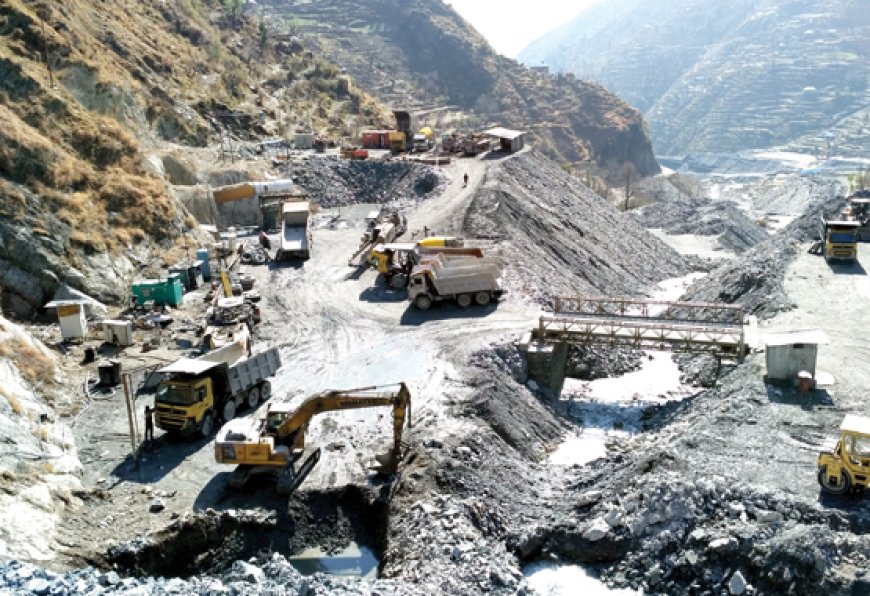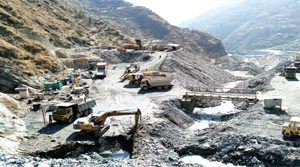The equipment suppliers should engage with their customers in various stages of the project.
Amitava Chakraborty, Vice President Procurement and Subcontract, Hindustan Construction Company The CE market, unlike a decade ago, is spoilt for choices. The domestic players have upgraded their capacity, enhanced technological capability by in house R&D or through tie up

 Amitava Chakraborty,
Amitava Chakraborty,
Vice President – Procurement and Subcontract,
Hindustan Construction Company
The CE market, unlike a decade ago, is spoilt for choices. The domestic players have upgraded their capacity, enhanced technological capability by in house R&D or through tie up with international players. Most known multinational players have already set up shop in India, and many are expected to follow suit.
And there comes the critical role played by the Procurement Heads, and Plant & Machinery Heads, who though spoilt for choices, leave no stones unturned to choose the right machine / brand, without losing sight on performance, efficiency, and economics. EQUIPMENT TIMES in its new series of interactions with Procurement Heads, and Plant & Machinery Heads brings you a glimpse on what make them choose the right machine/brand.
 In our first interview Amitava Chakraborty, Vice President – Procurement and Subcontract, Hindustan Construction Company shares his views with EQUIPMENT TIMES.
In our first interview Amitava Chakraborty, Vice President – Procurement and Subcontract, Hindustan Construction Company shares his views with EQUIPMENT TIMES.
OEM’s generally shy away from ‘Equipment Buy-Back’ at the end of the project or offer an unaffordable buy back rate.
-Amitava Chakraborty Vice President – Procurement and Subcontract, HCC
Could you elaborate us on the key factors that you look into while procuring new equipment? Does brand matter? Or are you country specific in selection? Could you also tell us reason if you are brand/country specific?
The key factors are
• Technical specifications, unique technical / patented features
• Equipment life cycle cost (which includes owning & operating cost)
• Service in terms of resident engineer at site for specialised equipment
• Guaranteed uptime availability
• Vendor managed inventory, service network
• Bundled extras like extended warranty, credit period etc.
• Unique financing schemes.
The above reflects in the brand image and hence certainly it matters. In case of overseas manufacturer, their investment in India presently and roadmap for future investment / localisation in India reflect about their business interest in the country.
Do you think there is shift toward ‘renting’ than owning equipment and fleet? What are the criteria of choosing one over the other methodology? What is your company’s stand on this?
Renting for specialised equipments like drilling jumbos, shotcrete machines is gaining momentum. However, for longer periods of time, renting of any equipment is not viable unless it is linked with the production / output.
Being an end-user how do you assess the impact of changing buying patterns impacted by concepts such as total life cycle or total cost of ownership on the selection process?
We have adopted these strategies for more than a decade. Evaluating the equipment on these criteria becomes very useful when there is disparity in the equipment buying cost and operating cost between two or more manufacturers.
How matured are the buyer and end-user segments in terms of opting advanced and feature-rich equipment & machinery, say for example an intelligent paver or a compactor for a road work?
The main issue is low availability of skilled manpower. Further, many time it so happens that when we purchase high featured equipment, we are unable to put it to optimum use because of various external issues like non-availability of sizeable work fronts, mismatch of production and ancillary equipment.
Like for example, the paver may have capacity of laying 800T per hour, but we are not able to do capacity utilisation because it is not possible to feed this equipment at that rate. The requirement of raw material, availability of dumpers etc might be a challenge. In many cases the manufacturers are not equipped to attend unique problems for eg. With electronic engines etc. diagnosis of the root problem sometime takes days together. Under such circumstances small contractors prefer less sophisticated equipments wherein they are confident on production and addressing any downtime within a specified period.
What about ‘disruptive service packages’ from OEMs? Could you tell us the shift in back up support from OEMs, and which are the areas they need to improve? What are the trends in this area?
The manufacturers need to come out of the mindset of not operating the equipment, under the pretext that they are not contractors. The equipment suppliers should engage with their customers in various stages of the project.
The OEM’s must engage with the government bodies and HR Ministry for training, under the Skill India initiative, and making available skilled manpower / operator should be done on a war-foot basis with identifiable results.
For project specific specialised equipment, they should be able to source and offer refurbished equipment so that these equipments become affordable and the Indian infra companies are able to source such specialised machines.
Also OEM’s generally shy away from ‘Equipment Buy-Back’ at the end of the project or offer an unaffordable buy back rate. Under ‘disruptive service packages’ it is expected that the OEM’s should play a active role in facilitating collaborations between their Indian and overseas customers for bidding projects together, sharing their customer list, arranging meetings with their customers from other part of the globe, so that specialised work in India can be subcontracted to them or their expertise can be shared.
What is the financing scenario look like? Since financiers choose specific brands to finance, does it impact your purchase decision?
In the present market conditions and considering the economic health of majority of the infrastructure companies, sourcing fund has become a big challenge. In our opinion the financers are not very selective on any specific brands.
What are the major challenges you face in procurement of equipment & machinery?
The time available between award of project and mobilising equipment becomes a challenge due to long lead times etc. A few of the clients order mandatory long lead equipments on their own and handover the same to the contractor at the time of award. This strategy is highly beneficial in cutting down the mobilisation time and upfront investment on the capital equipment by the contractors.
What is the existing size of your fleet in terms of value? Is there any budget earmarked for the period 2018-2020?
We have equipment worth Rs 1,600 crores and we do not have a pre-determined Capex budget on a annual basis. It is finalised based on the award of projects.
What are your preferred brands of equipment in various categories? Why do you prefer these brands?
There are already established brands in the various categories of equipment and need not require
specific mention.
Hits: 71








